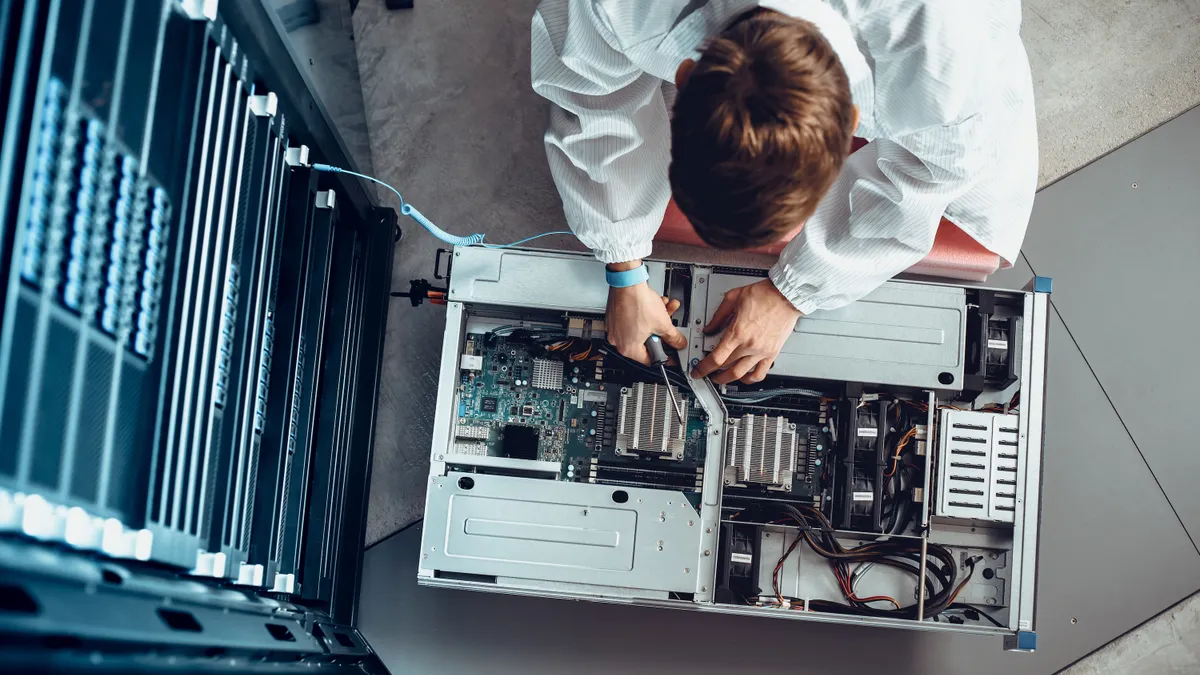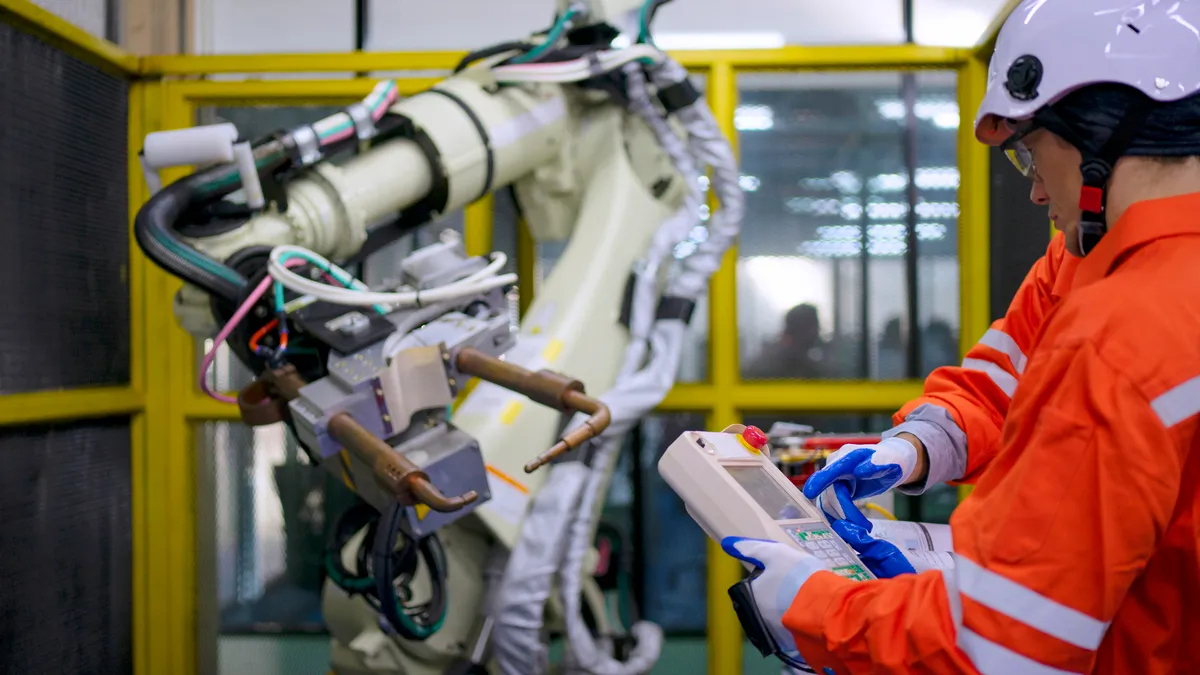Greg Vert is human capital applied AI leader at Deloitte Consulting LLP, and Laura Shact is AI leader for human capital at Deloitte Consulting LLP.
In two years, generative AI has gone from a novelty to a catalyst that is fast transforming a growing number of organizations. U.S. companies alone plan to spend more than $300 billion on AI in 2025, and 78% of respondents to Deloitte’s recent “State of Generative AI in the Enterprise” report said they expect to increase their overall AI spending in the next fiscal year.
While the investments are substantial, organizations’ results are mixed to date. According to one Deloitte report, 70% of organizations said they need at least a year before they see ROI on their AI investments.
Still, no one doubts generative AI's potential power. According to Deloitte’s Four Futures of Generative AI in the Enterprise, almost 80% of leaders believe generative AI will lead to significant business transformation in their respective industries by 2028.
How this technology plays out in each organization will depend, more than any technology in memory, on human resources leaders.
CHROs and their teams can play a critical role in aligning AI adoption with human-centered strategies by fostering trust, upskilling employees and redesigning workforce structures to support innovation and transformation.
Four potential AI outcomes in the next three years
Our research presents four plausible “futures” of generative AI implementation in the enterprise. These possibilities range from the AI bubble completely bursting to a future where it is driving improvements in cost efficiency, innovation and growth, all while increasing worker engagement without undermining trust. Here are the four most likely scenarios:
Growth but with costs: The impacts on businesses are mixed, with some organizations gaining advantages while others struggle to catch up. In some cases, generative AI can free workers from mundane tasks and enable them to focus on more purposeful tasks. However, the trade-off could be workers' loss of trust and feelings of autonomy.
The AI “bubble” bursts: Organizations that were first-movers in AI could lose both talent and the innovative edge if promised innovations fail to emerge. Workers could become alienated and move to companies that are more cautious in their AI deployment.
Human-directed strategic advancement: Some organizations, often led by HR, will be cautious about AI implementation if they don’t immediately see the potential for transformative results. Whatever advantages these organizations lose in their caution, they will make up for in strategic insight and slower but more solid gains.
All systems go – Many companies will go all in with generative AI, aiming to beat competitors to market and drive as much productivity and innovation as quickly as possible. The risks here are that their efforts outpace the market, build systems that are too complex to manage or alienate their workforce as people see their roles diminish.
What’s the best outcome? The most plausible outcome?
All these outcomes have potential upsides and downsides; in some cases, these categories defy conventional business wisdom. For example, being a first mover in generative AI may not necessarily be an advantage. Organizations that rush to get ahead of competitors could implement technologies without being completely clear on their strategic purpose or business goals.
Further overturning conventional wisdom is that, depending on the organization, slower AI adoption may be the better strategy. Once you understand generative AI’s best use case at your organization, HR leaders have a better idea of what the company’s talent and staffing needs will be. Companies that move too quickly could make hiring or restructuring decisions that turn out to be unnecessary or poorly timed.
The ultimate result of your AI investments will depend very much on human capabilities like cognizance, curiosity and collaboration. Achieving the productivity and scale that most organizations want requires not only technological breakthroughs but also thoughtful integration of human expertise and strategic organizational practices.
What’s HR’s Role?
To prepare their companies for this human-driven future of AI and help them realize better outcomes, HR leaders should focus on the following strategies:
- Align AI initiatives with strategic business outcomes: HR leaders should collaborate with business leaders to ensure AI investments focus on solving pressing organizational challenges, like improving productivity or enhancing customer experiences, while minimizing disruption to employee workflows.
- Invest in trust and transparency: HR leaders can spearhead efforts to embed transparency into generative AI strategies by developing clear communication plans about how AI tools will impact roles, responsibilities and decision-making processes. Deloitte research has found that AI adoption increases by 2.6 times when workers trust their employers. Leaders can also create accountability frameworks that assign ownership of AI outcomes to specific leaders, reinforcing trust through consistent updates on the technology’s implications for employees.
- Prioritize continuous learning and upskilling: HR leaders play a critical role in designing and implementing training programs that build AI fluency, tailoring initiatives to employees’ skill levels and personalizing career paths. They should also identify future-critical skills and create pathways for employees to transition into AI-augmented roles.
- Focus on redefining workplace roles: As AI transforms the nature of work, HR can lead initiatives to revise workforce planning models to address shifts in job requirements and opportunities. This includes strategies to attract and retain early-career talent by showcasing clear growth opportunities while ensuring that mid- and late-career employees have access to reskilling and support as their roles evolve.
- Cultivate creativity and innovation: CHROs can spearhead initiatives like “AI innovation labs” or cross-functional brainstorming sessions to identify creative uses for generative AI that complement human ingenuity. They can also ensure that these include a wide range of perspectives and ideas.
- Monitor the evolving legal and regulatory landscape: Even though law and regulation move slower than innovation, each will ultimately have a major role in shaping how generative AI evolves. Pay attention to developments in these spaces and let those events inform your implementation choices.
These four predictions of generative AI outcomes should be viewed as a framework for assessing your own aspirations and risks to refine your strategy better. Every organization in every industry has a major opportunity. Be strategic in both your ideation and implementation to make the most of those opportunities while minimizing your risks.



















